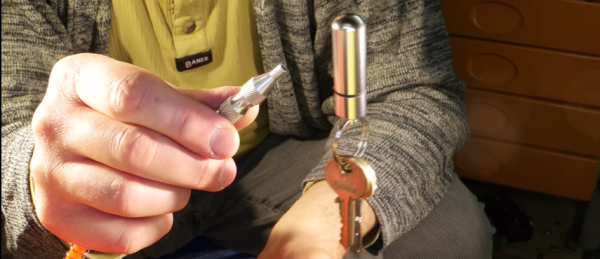What do you want to levitate today? [Latheman666] uses his air compressor to make all kinds of stuff float in mid air. Light bulb, key chain, test tube, ball bearing, tomato… pretty neat trick to try in your shop.
It is interesting to see what physics explain this behavior. The objects do not float just because they are pushed upwards by the airflow, that would be an unstable equilibrium situation. Instead, they obtain lift in a very similar way as the wings of an airplane. Not all objects will levitate using this trick: the object has to be semi-spherical at the top.
[Applied Science] nicely shows this behavior by levitating a screwdriver first, then an identical object but with a flat top. The flat top screwdriver fails to levitate. The curvature provides the path for a smooth airflow, because of the Coanda effect, creating a zone of low pressure at the top, making the situation analogous to that of an airplane wing. Therefore, for this to work, you need an object with some kind of airfoil shaped surface. Another great demonstration is that of [NightHawkInLight], using a high speed camera.
A very impressive experiment that needs nothing more than an air compressor!, we are sure you will try it next time you work with one. For more on this topic of levitation with air streams, check the ping pong ball levitation machine.
Continue reading “Compressed Air Levitation And The Coanda Effect”


















